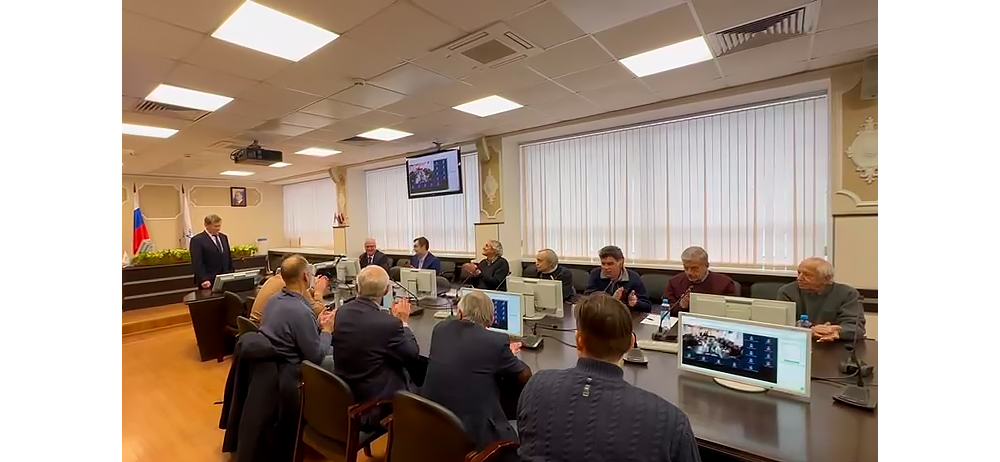Calculations for large-scale scientific projects discussed at MEPhI
News, 15 December 2022
On 14 December, the second workshop of the cycle “Elementary Particle Physics and Space Physics” dedicated to the topical problem of modern science and technologies was held at the Institute of Cosmophysics of NRNU MEPhI. Director of the Laboratory of Information Technologies JINR Vladimir Korenkov presented a report “Integration of distributed and parallel computing for large-scale scientific projects”.
The MLIT JINR Director spoke about the concept of the global computer infrastructure for storage, processing, and analysis of experimental data at the Large Hadron Collider (LHC) at CERN, and about the experience of creating the distributed information and computing system of JINR, which was organized on the platform of the DIRAC Interware.
According to the speaker, in the data processing structure of the CMS experiment at LHC, the Tier-1 centre in JINR is in the first place in the world out of all seven Tier-1 centres that support CMS. At the same time, only five organizations process data from LHC in Russia (JINR, NRC KI, SPBU, INR RAS in Troitsk, Sarov State Institute of Physics and Technology). “To train specialists in the field of computing for our large-scale projects we need our own training ground, which will allow obtaining necessary experience. Only on such an infrastructure it is possible to train highly qualified specialists in the field of computing who are able to efficiently solve problems of this kind,” Vladimir Korenkov noted, inviting representatives of MEPhI and MSU to participate in personnel training.
Vladimir Korenkov said that the uninterrupted operation of the powerful IT infrastructure of JINR, created in the last 5-7 years, was provided by an equally impressive engineering infrastructure. The Tier-1 data processing centre in Dubna worked smoothly even at a time when electricity was cut off for 7 hours throughout the city during the transportation of the MPD detector magnet at the NICA complex in 2020. Multifunctional information computing complex consists of five components. Three of them are Tier-1 centres for CMS and MPD, as well as Tier-2, which serves a large number of experiments, and actively developing DataLake. “A star of our infrastructure is the “Govorun” supercomputer. This year, a long-awaited event took place, our supercomputer overcame the petaflops barrier after the last modernisation. It also gave it a large volume hierarchical memory,” Vladimir Korenkov said. The fifth component of MICC MLIT JINR is the cloud infrastructure, which is also actively developing and is mainly aimed at solving the tasks of the Baikal-GVD megascience experiment and large projects in the field of neutrino physics. “We help to create cloud infrastructure in the JINR Member States. Now we have integrated 13 centres in this infrastructure, which are also important components of our IT infrastructure,” the scientist said.
Vladimir Korenkov emphasised that the implementation of large projects at the forefront of science requires the organization of a distributed IT infrastructure. “Almost all large projects, especially of the megascience class, cannot be realized in the framework of one computer infrastructure. Therefore, the integration of parallel, hybrid, and distributed calculations is now an extremely important task,” he commented. The speaker added that to meet the needs of experiments on storing a petabyte range of data, it is required to use computing resources which performance is measured at least in petaflops. At the same time, the participation of hundreds and thousands of users in the framework of one project requires new actively developing approaches.
